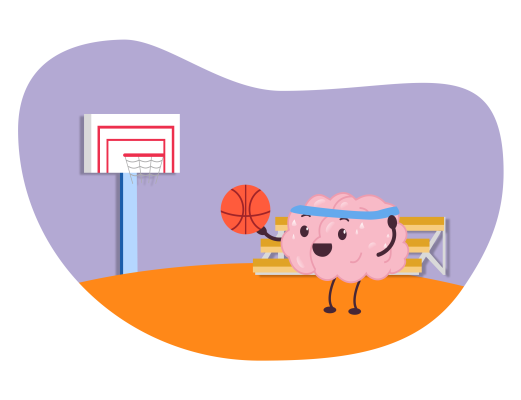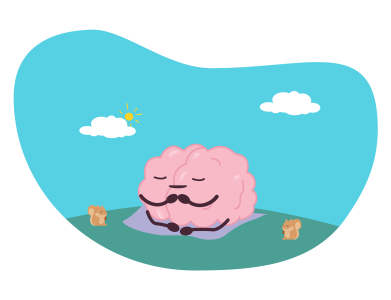Some people find that neuroplasticity exercises help them change the physical structure of their brains, which can help them deal with anxiety.
Your mind is a marvelous creation. It’s a powerful tool for education and development that begins in childhood and continues throughout life.
In other cases, though, it may be a bit too effective at preventing harm. It’s so effective that it might cause you to feel anxious and worried even if everything is going to be fine.
However, your mental state is malleable. It can reorganize the data you’ve gathered so far by creating new connections between neurons.
Therefore, neuroplasticity exercises may alleviate anxiety if performed appropriately and consistently.
What is Neuroplasticity?
Neuroplasticity refers to the brain’s capacity to reorganize its neuronal circuits in response to environmental factors. The human mind, in a nutshell, develops and improves continuously.
To give you an example, if someone loses their ability to speak due to a severe brain injury, they may be able to regain it with therapy. With the help of therapy, the brain can make new connections between nerve cells, which leads to these changes.
There is some evidence that impaired neuroplasticity contributes to the negative thinking that often occurs alongside depression. Neuroplasticity exercises can help retrain the brain to think in a more positive way, which can be good for a person’s mental health.
When you practice neuroplasticity, you can learn to put distance between your trigger and your reaction, delaying the onset of anxiety. Try to keep in mind that the more you engage in these neuroplasticity exercises, the more established your former pathways will become.
What are Neuroplasticity Exercises?
Neuroplasticity exercises are those that promote neural activation, which in turn improves cognitive performance. Logic puzzles, brainteasers, and memory games are all great examples of neuroplasticity exercises. Children and adults alike can benefit from these kinds of activities, which help to maintain mental agility.
Research shows that neuroplasticity training can improve memory, concentration, and decision-making. These can also lessen the likelihood of developing dementia and Alzheimer’s disease. These can also reduce your risk of developing dementia and Alzheimer’s disease. Thus, neuroplasticity activities are crucial for maintaining brain health and maximizing mental performance.
Neuroplasticity Exercise to Relieve Anxiety

The process of rewiring your brain may appear difficult and time-consuming, but it’s actually quite simple. Here you’ll learn several easy neuroplasticity exercises that can help you manage anxiety.
1. Meditation
Meditation is an excellent treatment for anxiety since it stimulates the brain’s natural ability to heal itself through neuroplasticity. It is effective because it trains one to concentrate on one thing at a time, calms the mind, and encourages one to think more positively and unwind. Multiple studies have demonstrated that this technique can be useful for lowering anxiety and preventing it from ever manifesting. Scientists believe that meditation helps by stimulating the parts of the brain that keep us calm and balanced, as well as by fostering better communication between both the left and right parts of the brain. Therefore, meditation can be useful for enhancing emotional and psychological well-being.
Physical activity has the potential to aid in the treatment of anxiety because of its role in promoting neuroplasticity. Fear, concern, and general uneasiness are symptoms of anxiety, a mental disorder. Several factors, including genetics, environment, experiences, and biochemical imbalances, have been linked to this disorder. Physiological symptoms of anxiety include a rapid heartbeat, excessive sweating, and a feeling of dizziness. It’s also possible for one’s mental and emotional health to suffer. Neuroplasticity exercises are effective for alleviating anxiety because they alter brain structure and function.
Aerobic exercise, yoga, and Tai Chi are just a few of the kinds of exercise that have been shown to boost mood and sleep quality, hence reducing stress and anxiety. Furthermore, they aid in increasing levels of neurotransmitters, including serotonin and dopamine. Every person who suffers from anxiety should incorporate neuroplasticity exercises into their treatment plan because they may be an effective way to manage anxiety problems.
2. Embrace New Skills
Neuroplasticity is the brain’s capacity for ongoing change and improvement as a result of the establishment of new connections among its neurons. The brain’s ability to change and grow in response to new stimuli is a key factor in the successful management of neuropsychiatric disorders. Exercising your brain’s plasticity with a new skill is a great idea. Learning something new stimulates the formation of new neural connections in the brain. Disorders like anxiety and depression may benefit from this approach. Studies have found a correlation between skill learning and improved intellectual capacity and memory. So, it is important to incorporate neuroplasticity activities into cognitive treatment.
3. Learn New Language
One of the most effective activities for fostering neuroplasticity is learning new skills and information. This type of difficulty motivates brain plasticity, which in turn mitigates age-related cognitive loss. Because it necessitates the use of several different cognitive abilities, such as memory, attention, and problem-solving, learning a new language is a fantastic way to stimulate neuroplasticity. Studies have also demonstrated that expanding one’s horizons by learning a new language increases one’s ability to think beyond the box. Given these benefits, it makes sense to explore learning a new language as a means of maintaining cognitive function beyond old age.
4. Listen to Music
Music is undoubtedly one of the most effective neuroplasticity therapy activities. To help relieve symptoms of stress, sadness, and discomfort, listening to music is a great neuroplasticity practice. Studies have shown that listening to music as part of therapy can help both the body and the mind feel less stressed. Music’s positive effects on cognition and brain activity go beyond just that. Moreover, some research also suggests that listening to music can help reduce heart rate and blood pressure. All of these impacts have the potential to boost health and happiness in general. When it comes to improving one’s neuroplasticity, music is an incredibly effective yet effortless practice.
5. Challenge yourself
Everyone knows that there is a correlation between effort and success. According to Daramus, one of the most effective methods to take advantage of neuroplasticity is to alter one’s behavior.
You can take advantage of your brain’s ability to change and adapt by giving yourself difficult tasks to perform. Take the plunge and face your fears. If you have social anxiety, a simple challenge might be to make eye contact and make a kind remark to a stranger in line at your local coffee shop.
Facing your fears head-on is a great way to increase your self-confidence. Your body’s ability to deal with stress, or “distress tolerance,” will gradually improve, resulting in a reduced fight-or-flight reaction to previously overwhelming triggers.
6. Make Art
Neuroplasticity refers to the brain’s receptivity to learning and change. This is a continuous process that is essential to learning new skills and recovering from traumas. Making art is a great way to stimulate brain plasticity for a variety of reasons. Making art challenges our brains in novel ways that promote learning and development. More than that, the concentrated effort required in creating art can aid in retraining brain connections impaired by injury or disease. As a result, engaging in creative activities like making art is a great method to foster neuroplasticity and improve brain health.
Rewiring your brain may not happen overnight. While the process of rewiring your brain won’t be instant, you may already feel so much better knowing that you’re on the right course.
How Can Neuroplasticity Help Anxiety?
Neuroplasticity, as Hidalgo puts it, “is a marathon, not a sprint.” “It entails the formation of new neural connections in the brain.” Once these connections have been formed, they must be maintained by practice and repetition.
It may take a few weeks for some people. months for others. Hidalgo argues that it takes more than 21 days for a new behavior to become normal.
She notes that she encourages her clients to “always focus on being aware of the habit or belief they’d like to change.” Then, have them focus on one manageable adjustment they can make. Eventually, things will change.
In Conclusion
Oftentimes, it’s difficult to break old routines. Learning new information (or, more precisely, unlearning old information) is a constant process thanks to neuroplasticity.
The human brain is highly malleable and can easily adjust to new situations. As a result, it’s possible that alleviating anxiety is just one of the many mental health benefits that could result from making certain adjustments.
Building new connections in the brain can help you feel less nervous overall, but it can take weeks or months.
It’s crucial to be consistent. Like a day at the gym won’t give you abs, a single meditation practice may not have lasting effects. The journey may seem long now, but if you keep at it, you will reach your destination.
Long-term improvement is achievable with consistent effort.







